第284章
...I am HEARTILY glad you are taking up the Distribution of Plants in New Zealand, and suppose it will make part of your new book. Your view, as Iunderstand it, that New Zealand subsided and formed two or more small islands, and then rose again, seems to me extremely probable...When Ipuzzled my brains about New Zealand, I remember I came to the conclusion, as indeed I state in the 'Origin,' that its flora, as well as that of other southern lands, had been tinctured by an Antarctic flora, which must have existed before the Glacial period. I concluded that New Zealand never could have been closely connected with Australia, though I supposed it had received some few Australian forms by occasional means of transport. Is there any reason to suppose that New Zealand could have been more closely connected with South Australia during the glacial period, when the Eucalypti, etc., might have been driven further North? Apparently there remains only the line, which I think you suggested, of sunken islands from New Caledonia. Please remember that the Edwardsia was certainly drifted there by the sea.
I remember in old days speculating on the amount of life, i.e. of organic chemical change, at different periods. There seems to me one very difficult element in the problem, namely, the state of development of the organic beings at each period, for I presume that a Flora and Fauna of cellular cryptogamic plants, of Protozoa and Radiata would lead to much less chemical change than is now going on. But I have scribbled enough.
Yours affectionately, CH. DARWIN.
[The following letter is in acknowledgment of Mr. Rivers' reply to an earlier letter in which my father had asked for information on bud-variation:
It may find a place here in illustration of the manner of my father's intercourse with those "whose avocations in life had to do with the rearing or use of living things" ("Mr. Dyer in 'Charles Darwin,'" "Nature Series", 1882, page 39.)--an intercourse which bore such good fruit in the 'Variation of Animals and Plants.' Mr. Dyer has some excellent remarks on the unexpected value thus placed on apparently trivial facts disinterred from weekly journals, or amassed by correspondence. He adds:
"Horticulturists who had...moulded plants almost at their will at the impulse of taste or profit were at once amazed and charmed to find that they had been doing scientific work and helping to establish a great theory."]
CHARLES DARWIN TO T. RIVERS. (The late Mr. Rivers was an eminent horticulturist and writer on horticulture.)Down, December 28 [1866?].
My dear Sir, Permit me to thank you cordially for your most kind letter. For years Ihave read with interest every scrap which you have written in periodicals, and abstracted in MS. your book on Roses, and several times I thought Iwould write to you, but did not know whether you would think me too intrusive. I shall, indeed, be truly obliged for any information you can supply me on bud-variation or sports. When any extra difficult points occur to me in my present subject (which is a mass of difficulties), I will apply to you, but I will not be unreasonable. It is most true what you say that any one to study well the physiology of the life of plants, ought to have under his eye a multitude of plants. I have endeavoured to do what Ican by comparing statements by many writers and observing what I could myself. Unfortunately few have observed like you have done. As you are so kind, I will mention one other point on which I am collecting facts;namely, the effect produced on the stock by the graft; thus, it is SAID, that the purple-leaved filbert affects the leaves of the common hazel on which it is grafted (I have just procured a plant to try), so variegated jessamine is SAID to affect its stock. I want these facts partly to throw light on the marvellous laburnum Adami, trifacial oranges, etc. That laburnum case seems one of the strangest in physiology. I have now growing splendid, FERTILE, yellow laburnums (with a long raceme like the so-called Waterer's laburnum) from seed of yellow flowers on the C. Adami. To a man like myself, who is compelled to live a solitary life, and sees few persons, it is no slight satisfaction to hear that I have been able at all [to] interest by my books observers like yourself.
As I shall publish on my present subject, I presume, within a year, it will be of no use your sending me the shoots of peaches and nectarines which you so kindly offer; I have recorded your facts.
Permit me again to thank you cordially; I have not often in my life received a kinder letter.
My dear Sir, yours sincerely, CH. DARWIN.